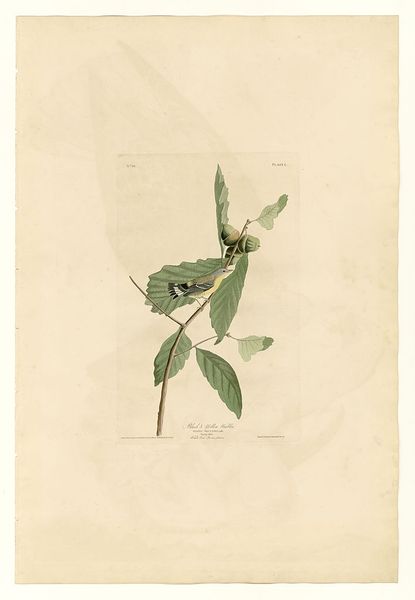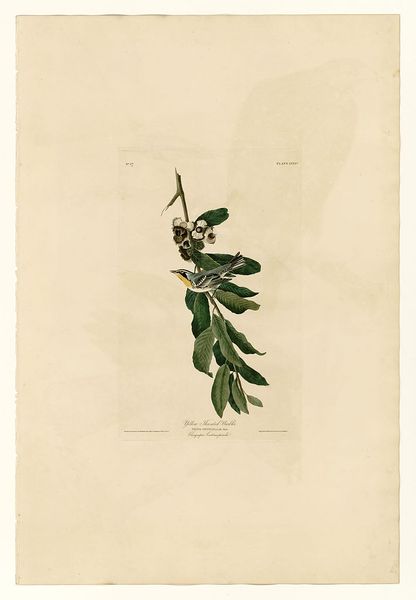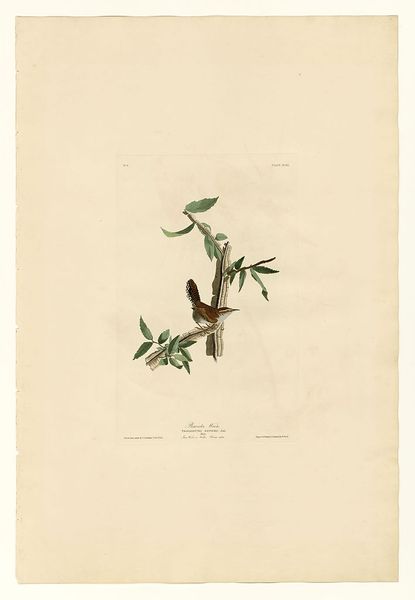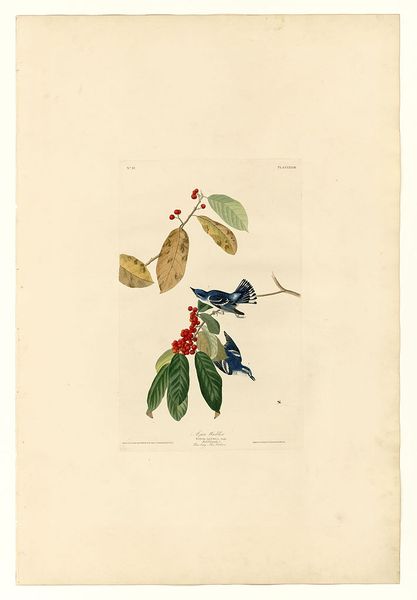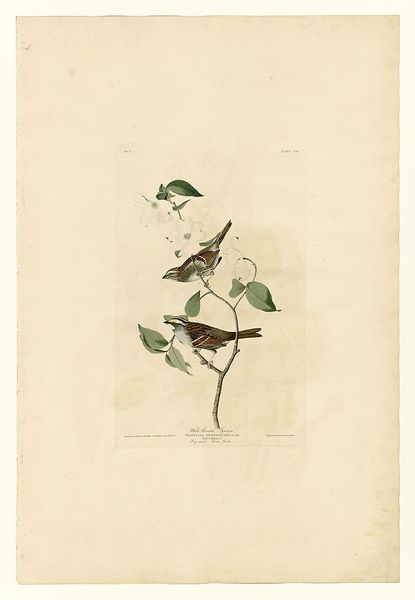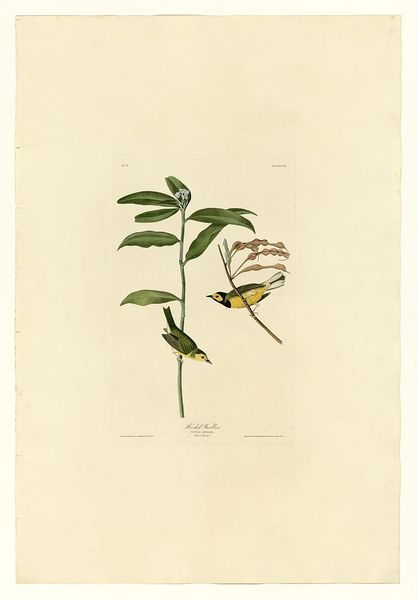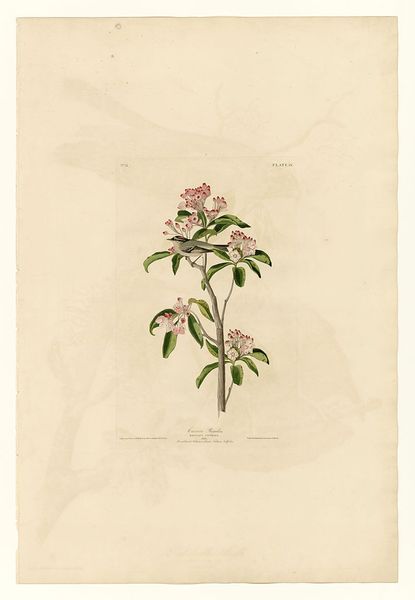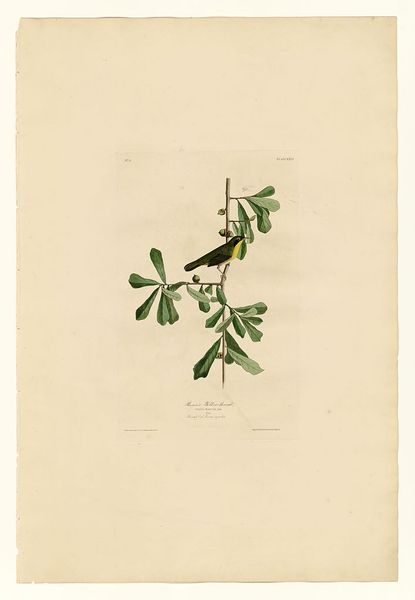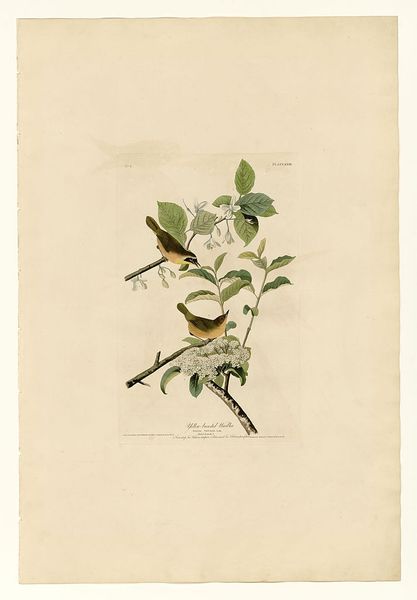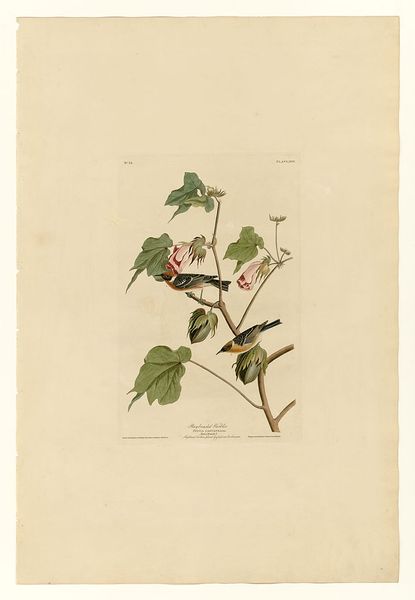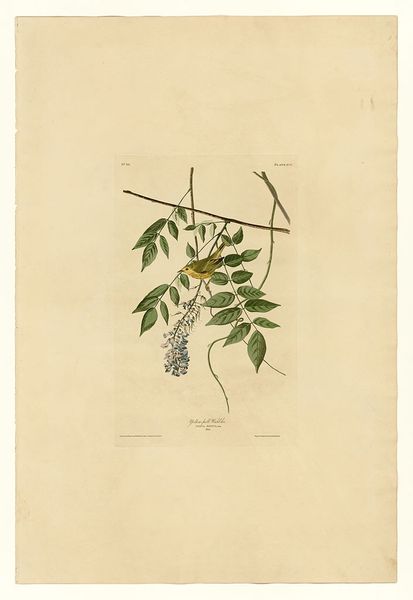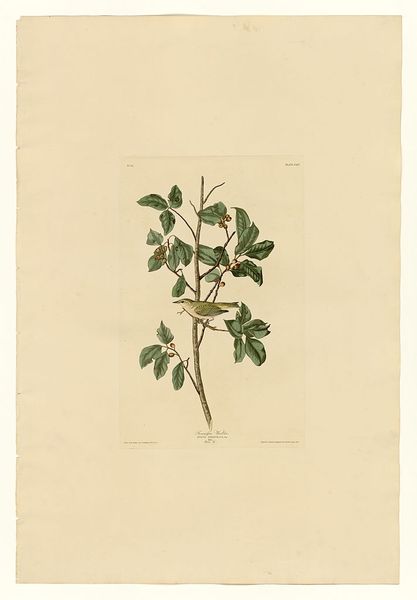
painting, watercolor
#
portrait
#
painting
#
landscape
#
flower
#
leaf
#
watercolor
#
plant
#
watercolour illustration
#
botany
#
naturalism
#
botanical art
#
watercolor
Copyright: Public domain
Plate 19. Louisiana Water Thrush, was made by John James Audubon using etching, aquatint and hand coloring. Audubon’s Birds of America, of which this print is a part, grew out of a particular moment in the early nineteenth-century United States when the natural sciences were ascendant and the frontier was perceived as a resource ripe for exploitation. As we look at this image, consider how it creates meaning through visual codes. Audubon wasn’t only depicting birds; he was also participating in the national project of cataloging and commodifying the continent’s natural resources. His project took a great deal of labor: assistants traveled the country, and Audubon employed the latest scientific techniques to create the prints. Further research using field notes, shipping records, and biographies of Audubon and his collaborators would allow a deeper understanding of the conditions of artistic production in nineteenth-century America. Ultimately, art is contingent on social and institutional context.
Comments
No comments
Be the first to comment and join the conversation on the ultimate creative platform.
